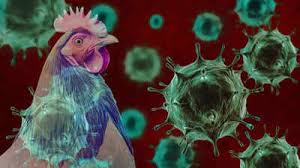Is the Next Pandemic Brewing in America’s Heartland? H5N1 Bird Flu Sparks Growing Alarm
A quiet storm may be gathering across America’s agricultural landscape—and it has the potential to erupt into a full-blown public health emergency.
As the deadly H5N1 bird flu virus spreads rapidly through livestock and poultry populations, the first confirmed human fatality in the U.S. is forcing experts and officials to confront an unsettling possibility: the next pandemic may already be unfolding—just not in plain sight.
While federal health agencies maintain that human-to-human transmission has not yet occurred, leading virologists and epidemiologists are sounding the alarm.
The virus, they warn, is evolving. With each new infection comes a risk of mutation or viral reassortment—a process where two viruses co-infect a host and exchange genetic material. It’s this genetic roulette that has the scientific community on edge.
“The warning signs are all there,” says Dr. Peter Palese, director of the Global Virus Network (GVN) and a world-renowned influenza researcher. “We cannot afford to be reactive. This is the time to act—decisively and comprehensively.”

A Crisis Spreading on the Ground
Since the first signs of H5N1 resurgence in 2022, over 168 million poultry have been culled to contain the spread. The virus has now moved beyond birds, with nearly 1,000 dairy cow herds affected and over 70 human cases confirmed across the U.S.—a number that experts say is likely underreported.
Regions with dense farm concentrations and inconsistent safety protocols are proving to be fertile ground for viral spread. In some areas, inadequate worker protection and limited disease tracking are creating the conditions for what could become a zoonotic disaster.
The economic impact is already being felt. Soaring egg prices and disrupted supply chains are early indicators of a system under strain. But the human cost—if the virus makes the jump to efficient human-to-human transmission—could be catastrophic.
Global Experts Demand Action
The Global Virus Network is urging immediate action at both the national and international levels. Their recommendations include:
Enhanced virus surveillance in both livestock and human populations
Mandatory biosecurity upgrades on farms and food production facilities
Public awareness campaigns to inform communities about signs, symptoms, and prevention
Accelerated vaccine and antiviral research tailored to avian influenza strains
The comparisons to the early days of the COVID-19 pandemic are becoming increasingly difficult to ignore. Delays in communication, a reluctance to disrupt industry, and fragmented public messaging all echo the mistakes of 2019 and 2020.
🔹 Conclusion
The H5N1 outbreak is more than a distant agricultural issue—it is a public health threat with global implications. As human cases surface and the virus continues to mutate, the line between animal outbreak and human pandemic grows thinner by the day.
Now is the moment for bold, coordinated action. The opportunity to prevent another catastrophe exists—but it’s shrinking. If the world fails to heed the early warnings, the cost—once again—may be measured in lives, livelihoods, and lost time.
